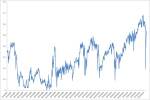I’ve previously referred to a “confidence disconnect” between consumers and business, and it seems to be continuing. Depending on which stats you look at, sales over the weekend increased between 6 percent and 13 percent over last year, which indicates that consumers are still pulling out their wallets and supporting the economy. But from a business standpoint, although the numbers are quite good at the surface, they may not be as good as they seem.
Several factors make the strong top-line numbers less positive from a business standpoint. The first, and potentially most significant, has to do with whether the sales are profitable. Given the wide range of deals and discounts employed to get buyers to make a purchase, profitability took a hit last year—and it may this year as well. The second is whether strong sales over the kick-off weekend will augur similarly strong results over the entire holiday season, or whether retailers have merely succeeded in bringing sales forward rather than increasing them overall. Evidence from past years runs both ways, and the effect on Black Friday itself was negative, as earlier store openings on Thanksgiving seem merely to have led people to start shopping sooner rather than to buy more goods. The National Retail Federation projects overall sales will increase 4.1 percent this year, which is relatively strong, but it’s less than last year’s 5.6-percent increase.
















